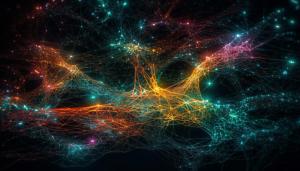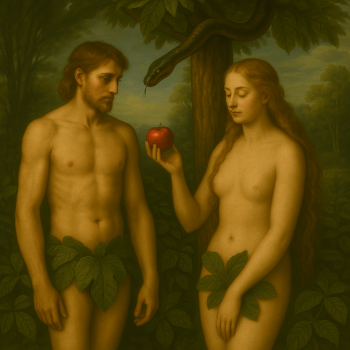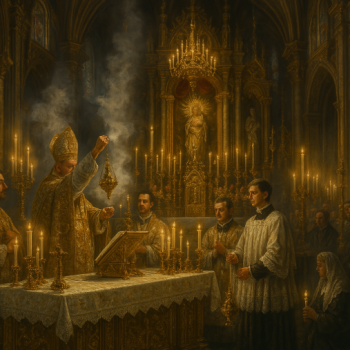We know one thing about Ultimate Reality, namely that everyone is related, and everything is connected. The mystics of all traditions and the scientists, especially the quantum physicists, agree. This profound, but simple, realization can be life-changing. Some say that their religion is kindness or that we should love our neighbors as ourselves. Same thing.
In a previous post, I said that many of our beliefs are comfortable, rather than sensible. I stated that evidence and experience do NOT confirm (or deny) many of our beliefs. Finally, I suggested that all religion is cultural, and all theology is speculation. What do we know about Ultimate Reality?

Mystics and Scientists
Some see science and spirituality in conflict. In 1970, famed psychologist Abraham Maslow wrote Religion, Values, and Peak Experiences, where he suggested that they are compatible:
“It is also increasingly developing that leading theologians, and sophisticated people in general, define their god, not as a person, but as a force, a principle, a gestalt-quality of the whole of Being, an integrating power that expresses the unity and therefore the meaningfulness of the cosmos and the ‘dimension’ of depth,” etc. At the same time, scientists are increasingly giving up the notion of the cosmos as a kind of simple machine, like a clock, or as congeries of atoms that crash blindly, having no relation to each other except push and pull, or as something that is final and eternal and that it is not evolving or growing….
“These two groups seem to be coming closer and closer together in their conception of the universe as “organismic,” as having some kind of unity and integration, as growing and evolving and having direction, and therefor, having some kind of ‘meaning.'”
In The Way, I equated the mystics, who seek subjective experience, with the scientists, who seek objective evidence, of Ultimate Reality. There are mysteries that we do not understand yet, but we do not know if Ultimate Reality is natural or supernatural. In the past, we thought that “mysteries,” such as thunder and lighting, were supernatural.
The Mystics
A mystic is a person who seeks union with God or unity with Ultimate Reality through contemplation and self-surrender. Every religion, including Christianity, has its mystics, but Christianity is generally more doctrinal and less mystical than other religions.
Drawing on classic studies by William James and F.C. Happold, as well as personal experience, Douglas W. Shrader explores seven characteristics of mystical experiences:
1) ineffability (the inability to capture the experience in ordinary language),
2) noetic quality (the notion that mystical experiences reveal an otherwise hidden or inaccessible knowledge),
3) transiency (the fact that mystical experiences last for a relatively brief period of time),
4) passivity (the sense that mystical experiences happen to someone; that they are somehow beyond the range of human volition and control),
5) unity of opposites (the feeling of oneness, wholeness, or completeness),
6) timelessness (a perception that mystical experiences transcend time), and
7) a feeling that one has somehow encountered “the true self” (the sense that mystical experiences reveal the nature of our true, cosmic self: one that is beyond life and death, beyond difference and duality, and beyond ego and selfishness).
The mystics, even those who believe in a personal God, often experience God as a great darkness or a great light, a great silence or a great sound, a great presence or a great void. Consider that if everyone who searched for God or Ultimate Reality came face-to-face with the same person (such as Buddha, Jesus, Krishna, Thor or Zeus) then many of us might re-examine our beliefs!!
However, it is interesting to note what the mystics DO NOT see, as well as what they do see. Generally, the mystics of all traditions sense a presence, NOT a person. They feel a Oneness, NOT a cosmic rift between God and humans and NOT a judgment seat. They feel an immediacy in the here and now; they are NOT transported to heaven or hell.
If someone encounters a person, rather than a presence, they often see the person who they expect to see. A Hindu might see Krishna or a Catholic might see Mary. Perhaps these are personal projections of impersonal perceptions, where someone overlays their individual conditioning upon a universal experience.
In fact, mystical experiences more often reflect the impersonal Ultimate Reality of the Eastern religions, rather than the personal God of the Western religions.
The Scientists
In Newtonian physics, things are discrete objects. Systems are atomistic or reductionist; the whole is the sum of the parts. In quantum physics, things are linked in an interconnected field. Systems are holistic or relational; the whole is in the parts and the parts are in the whole. We realize that our world is connected, as we grapple with global issues such as climate change.
Fritjof Capra wrote an influential book called The Tao of Physics, describing the parallels between Eastern mysticism and modern physics, especially quantum physics:
“A consistent view of the world is beginning to emerge from modern physics which is harmonious with ancient Eastern wisdom.… Quantum theory thus reveals a basic oneness of the Universe. It shows that we cannot decompose the world into independently existing smallest units. As we penetrate into matter, nature does not show us any isolated “basic building blocks,” but rather appears as a complicated web of relations between the various parts of the whole.… Mystics understand the roots of the Tao but not its branches; scientists understand its branches but not its roots. Science does not need mysticism and mysticism does not need science; but man needs both.”
Jill Bolte Taylor, a neuroscientist, experienced a stroke in the left side of her brain. (The left brain is analytical and logical, whereas the right brain is creative and intuitive.) She was unable to walk, talk, read, write, or recall her life. As she was losing her capacity, she had a mystical experience, and she was able to speak about it in a popular TED Talk after she recovered.
The mystics and the scientists agree that everyone is related, and everything is connected. In a black-and-white Newtonian world, there was no paradox, but in a Technicolor quantum Universe, there are paradoxes all around us. Biologist J.B.S. Haldane famously agreed, “The Universe is not only queerer than we suppose, but queerer than we can suppose.”
If you want to stay up to date on the latest from You Might Be Right, simply subscribe with your email.














